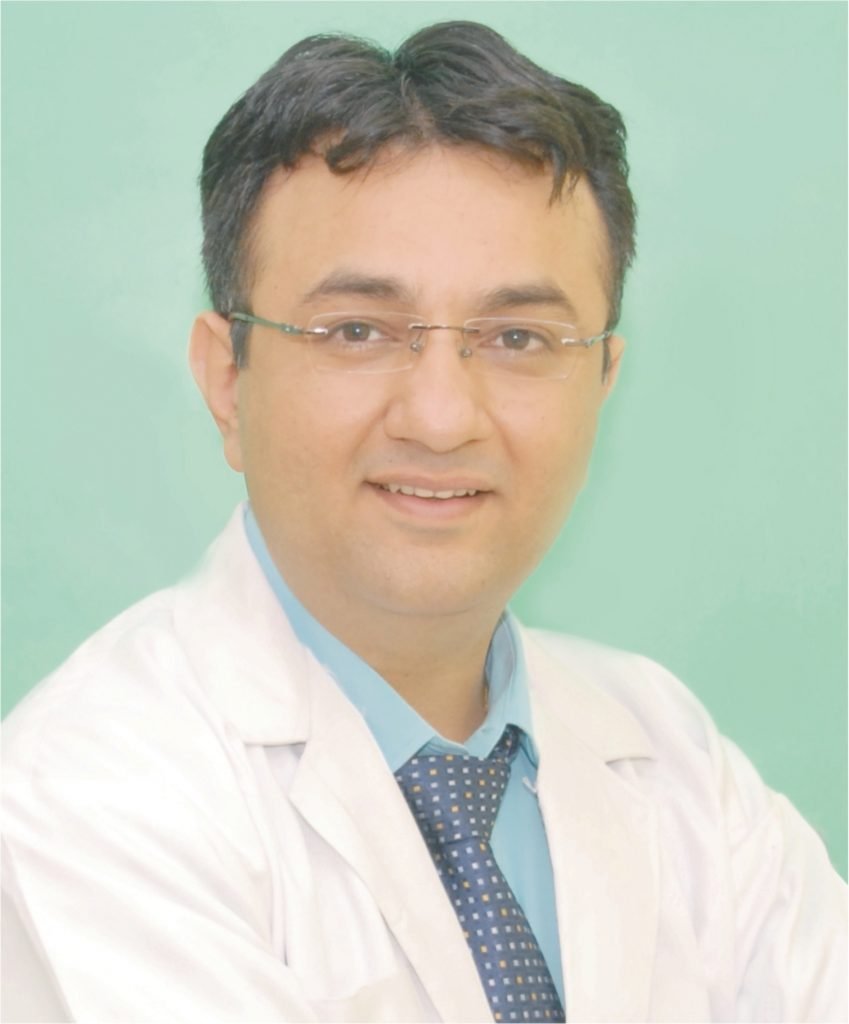Home » Medical Procedure » Elbow Replacement Surgery
Elbow Replacement
Surgery
What is Elbow
Replacement Surgery?
Sometimes, a patient might experience a problem or pain in moving the elbow, which could become serious and requires the surgical approach called Elbow Replacement. In this, a surgeon replaces your elbow joint with an artificial joint to reduce discomfort and regain motion in an injured elbow. This surgical procedure is also often known as Total Elbow Arthroplasty.
Not every elbow replacement operation involves the entire elbow. In some patients, the radial head is the sole component of the joint that needs to be replaced. When drugs or physical therapy (exercises to increase strength and mobility) cannot sufficiently reduce a person’s discomfort, surgery is frequently used to enhance their quality of life.
Moreover, doctors conduct this surgery to reduce discomfort and improve the range of motion in patients with persistent elbow pain. Many people report an improvement in quality of life following elbow surgery. You may resume your favorite activities once the discomfort is reduced.

Renowned Elbow Replacement Surgeons
at Wockhardt Hospitals
- Mumbai Central
- Mira Road
- Nagpur
- Rajkot
Why is it done?
Elbow replacement can be done due to many reasons. Your elbows can be damaged by conditions such as – injury during sports, arthritis, etc. Usually, the damage caused by fractures or arthritis can be corrected by simple surgery; however, you should go for the best elbow replacement surgery in India at Wockhardt Hospitals if the damage is too severe.
Sometimes pain and loss of motion are the primary reasons people undergo elbow replacement. The conditions which might damage the elbow bone and joint are –
- Elbow dislocation
- Sports injuries
- Accidental injuries
- Injuries caused by overuse of elbow
- Several types of arthritis
- Bone fractures
- Osteoarthritis
- Tumor in and around the elbow
- Past surgery went wrong
- Stiff elbow
In some cases, you might need the replacement elbow joint surgery of just one part of the joint. In this case, if the head of one of your joints is damaged, it can be replaced with an artificial head. However, if the entire joint needs to be replaced, the end of the bones in the elbow will be reshaped.
Benefits of
Elbow Replacement
The following are the benefits of elbow surgery –
- Reduced joint pain
- Improved range of joints movement in some cases
- Improved quality of life
- Reduces risks of chronic health conditions
- Restores movement and activity
- Safer
This elbow surgery is often successful, and most people are happy with the results and how the quality of their lives is improved. However, you must wait to recover completely after the surgery before seeing the benefits.
Types of Elbow Replacement
At Wockhardt Hospitals, below are the types of elbow replacement surgeries done-
- Synovectomy - This removes the synovium as it becomes inflamed due to arthritis.
- Arthroscopic Debridement - This procedure removes any bony growth in the joint and loose bits of cartilage and bones.
- Elbow Interposition Arthroplasty - This procedure helps relieve pain when the bone surface rubs together for people with inflammatory arthritis.
- Total Elbow Replacement or Arthroplasty - This surgery replaces the damaged part of the elbow with artificial components.
Tests Performed before
Elbow Replacement
At Wockhardt Hospitals, our team of experts prefers to examine other conditions which might result in complications during the surgery. The tests before elbow surgery are as follows-
CBC
A complete blood count, or CBC, measures different features and parts of the blood, including blood cells, white blood cells, neutrophils, eosinophils, basophils, lymphocytes, monocytes, and platelets. It also detects any related conditions which might cause complications during the surgery.
ESR
Esr stands for erythrocyte sedimentation rate or “sed rate.” It indirectly measures the protein level in the blood. If the tests show that your red blood cells sink faster than usual, you have a medical condition causing inflammation. This might cause injury, infection, etc., during and after the surgery.
Blood Sugar (Fasting and After Meal)
A blood sugar test is done before and after the meal to manage your blood sugar level accordingly before the surgery. High blood sugar increases the chances of getting infections and other complications during the surgery. Thus, a doctor will never perform surgery on people having Hyperglycemia or Hypoglycemia.
HIV Tests
HIV tests are done to determine the surgery’s risk and reduce them accordingly. It also alters the risk-benefit ratio of a procedure. In addition, the knowledge of HIV will not change the course of treatment.
Blood Group and Rh Factor
Rh factor blood tests are done to understand your blood group. This is helpful for the doctor to find the blood group which matches yours if any situation demands the need for an external blood supply.
Also, kidney and liver function tests are done to ensure there are no complications of organ failure, which might lead to another condition.
How is elbow joint
replacement surgery performed?
Elbow replacement involves surgically replacing bones that make up the elbow joint with artificial joint parts or prosthetic components. First, you will be given general anesthesia. The doctors might also give you spinal and epidural (regional anesthesia) to numb your arm.
A small cut is made at the back of the elbow, giving a better view for precisely performing the surgery. Then, the surgeon removes the elbow joints’ damaged tissue and arm parts. A drill is used to make a hole in the center of the arm bone. Lastly, the artificial joint is glued or attached with a hinge to ensure the elbow moves smoothly. The incision is then stitched. To cover the surgery and protect it from infection, surgeons cover it with bandages. Also, splints might be used to secure your arms. Though there are several risks and complications involved in the surgery, it is very effective in treating any elbow injury or fractures.
Before Procedure?
Before the surgery, you will have a discussion with your concerned doctor or surgeon. They will discuss your medical history and what drugs or supplements you are taking. Also, they will discuss if you are taking any blood thinners, recreational drugs, or anything without prescriptions. You might be asked to stop any blood thinners two weeks before the surgery. This is because blood thinner can cause excessive loss of blood during the surgery. Also, tell them if you are on any medication for diabetes or any other condition. Depending on the condition, they will alter the dosage or ask you to stop taking those before the surgery.
Also, the surgeon might ask you to visit a diabetologist or heart doctor and ask them if the surgery will be safe for you. They will also ask you to stop taking alcohol and quit smoking a few days before the surgery. Moreover, inform them if you have the following conditions –
- Flu
- Fever
- Herpes breakouts
- Cold or any other conditions before the surgery.
These conditions might give rise to several complications and risks after the surgery. This might lead to delayed recovery. The surgeon will ask you to get a list of routine biochemial investigations to assess general fitness. Also he might orger radiological examinations such as X-ray, CT scans, MRI’s to evaluate the severity of the conditions.
During Procedure?
A small incision is made during the surgery, usually at the back of the elbow. The humerus is prepped so that the metallic stem of the artificial elbow joint can be inserted into it after the tissues around the joint have been removed. The ulna is then prepared, which secures the metallic stems placed into the humerus, which is connected by a hinge. The wound is closed with a padded dressing to protect the incision.
After Procedure?
You might need to stay in the hospital for 1 to 2 days after the surgery because the doctor needs to monitor you to avoid any post-surgical complications. After being discharged, you will be given instructions to take care of your wounds and elbow. Also, you must arrange for someone who can take you home after the surgery.
The doctor might place a soft splint on your arm for the first week to hold your elbow. The area might feel warm and tender for 2-4 weeks. Also, you might feel swelling, which might go down during this time. After the incision is healed, you require a harder splint with a hinge.
You must not drive your car before 6-8 weeks or until your doctor has approved it. Also, they will tell you when you should resume your activities, such as cooking, making meals, bathing, and doing chores.
How to Prepare
for Fast Recovery?
For fast recovery, you must follow the doctor’s advice. You must avoid strenuous activities like exercise, cycling, running, etc. Continue physiotherapy at home as advised by the doctor. Also, you will be given antibiotics to prevent infections and relieve pain. After the incisions heal, you might need to visit the doctor so that they recommend therapies for smooth movement of your elbow and joints. Also, you should contact your doctors immediately if you feel any complications.
What are the
Risks of Elbow Replacement?
Like any other surgeries, elbow replacement surgeries are also associated with possible risks. Bleeding, blood clots, reaction to anesthesia, and certain medications are common. However, some other risks involved in the surgery are-
- Nerve damage - The nerve around the area of the implant can be damaged, which might cause numbness, weakness, and pain.
- Fracture - There is a chance that the bones in the elbow joint will break after the surgery.
- Implant loosening - The implants might loosen or become worn over time.
- Infection - Infections might occur in the incision area or the tissue. This might need further surgery.
Talk with our expert
Life Wins Stories
The vision and leadership of Wockhardt’s Founders have been instrumental in shaping the organisation’s ethos of providing high-quality and affordable healthcare services to patients worldwide. Read and listen to the heartfelt experiences of our patients as they share their stories about the exceptional care they received at Wockhardt Hospitals.





Paresh Vyas
Excellent facility with renowned Cardiologists like Dr Dharmesh R Solanki. Very humble doctors, and good staff. Value for money.

Meena Kothari
Excellent facility with renowned Cardiologists like Dr Dharmesh R Solanki. Very humble doctors, and good staff. Value for money.
Life Wins Stories



Paresh Vyas
Excellent facility with renowned Cardiologists like Dr Dharmesh R Solanki. Very humble doctors, and good staff. Value for money.

Meena Kothari
Excellent facility with renowned Cardiologists like Dr Dharmesh R Solanki. Very humble doctors, and good staff. Value for money.
Learning Wins Life Wins
FAQs
Q. Is elbow surgery a major surgery?
- Elbow Fracture
- Elbow Dislocation
- Osteoarthritis – Worn down cartridges in the joints
- Rheumatoid Arthritis – An Autoimmune disorder involving inflammation of the joints.






















